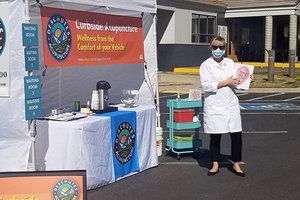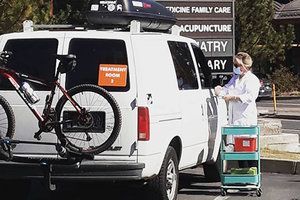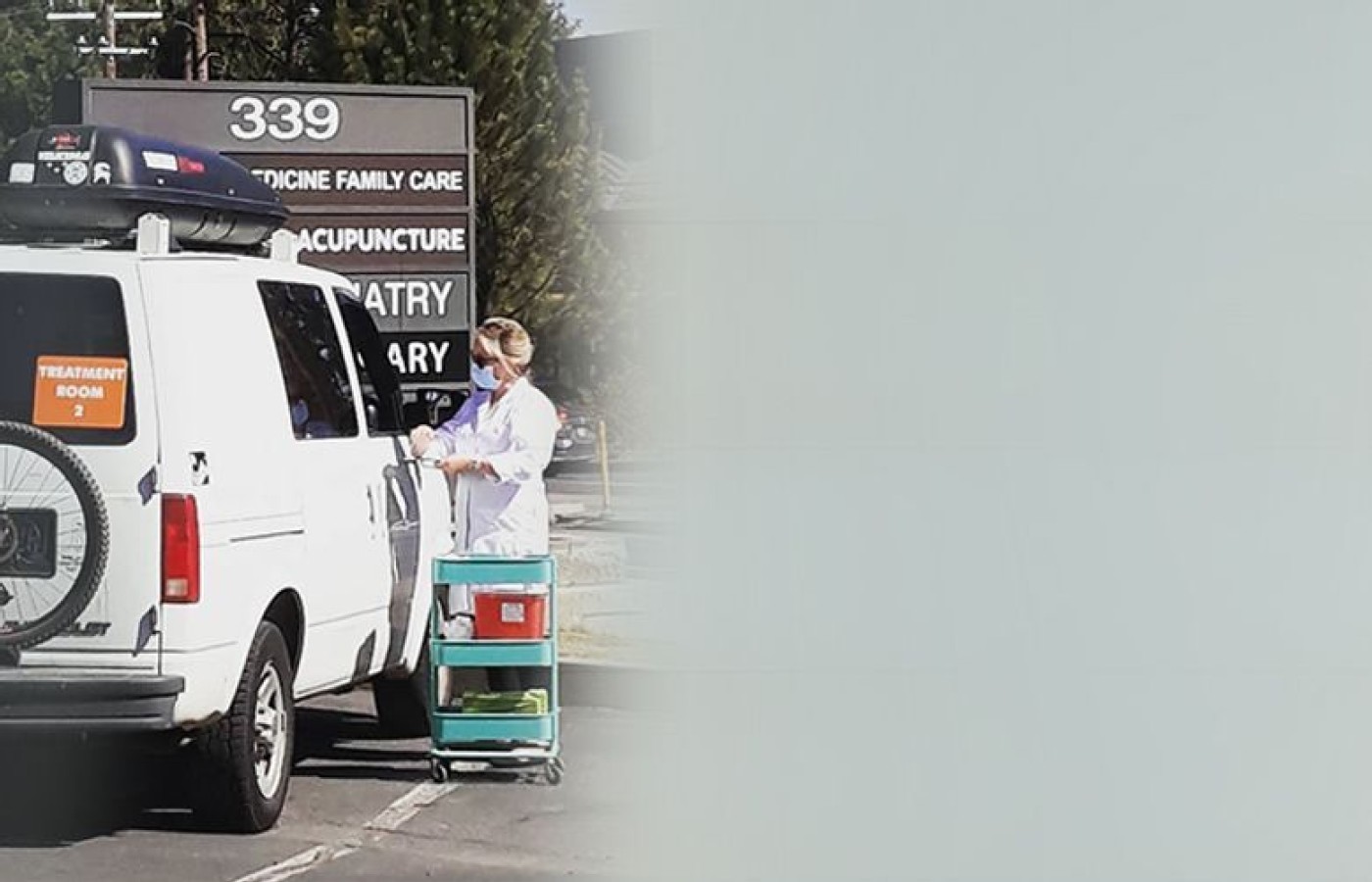Whether you accept it, avoid it or live somewhere in between, insurance coverage has become a defining issue for our profession. Patients increasingly expect to use their benefits, practitioners want to be compensated fairly for their time and expertise, and the system itself remains – at best – fragmented. The encouraging news is that coverage has expanded in meaningful ways. The challenging news is that reimbursement, across the board, remains inadequate.
Curbside Acupuncture
Editor's Note: This is one of several COVID-19 themed articles inserted in the May digital edition after publication in an effort to provide readers with the most relevant, timely information regarding how to practice during this crisis.
In light of the COVID-19 pandemic, I realized I had to come up with a safe way to offer treatments to our patients and local residents. As an acupuncturist, I knew I had the tools to treat the mental health crisis in our community and that it was terribly needed, especially for our beloved first responders. So, I began offering a safe, new way to access treatment: curbside acupuncture.
Curbside acupuncture is essentially a minimal-contact, drive-up or drive-through service specifically for those experiencing high levels of stress, anxiety, depression, sleep disturbance, fear, grief and/or worry; and anyone seeking a better sense of well-being during this time of crisis.

Based on the heavily researched NADA protocol (also called 5-needle protocol or 5NP), five sterile acupuncture needles are placed in participants' ears and retained for 15-45 minutes, all from the comfort of their own vehicle. I provide a "curbside acupuncture car kit," which includes a pen, travel-sized bottle of hand sanitizer, aromatherapy cotton puff, a delicious Chinese herbal tea, and a special link to meditation music to listen to on their phone during the treatment. Participants do not leave their vehicle at any point and are only in brief contact with me.

As patients pull up to the curbside acupuncture tent, they are greeted and given a clipboard with a short intake, informed consent, a description of what the treatment will entail, along with their car kit. My assistant then attaches a sign to the back window of the car that reads, "Waiting Room." The patient then parks, fills out the proper documents, and then I approach with my cart containing my needles, cotton balls, alcohol prep pads, hand sanitizer, sharps container, small trash, and a few other essentials.
I proceed with the five needles in the left ear, and for some, yin yang. I ask the patient how long they'd like to experience the treatment; most ask for 30 minutes. I turn the "Waiting Room" sign over to read "Treatment Room" and I mark the time to pull needles for fast reference. In this manner, I can treat many patients/cars at the same time.
The response to this offering has been significant. Because providers like myself are not permitted into the local hospital at this time, I've been working diligently to get the information to the doctors, nurses and other first responders so they can participate. My hope is that other acupuncturists can implement this in some way to benefit their communities.



